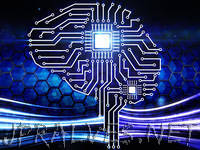
“Bhavin Shastri, a Banting postdoctoral fellow in our group, has recently conducted research in using graphene as a saturable absorber element in neuron-inspired laser processors. Novel materials and devices in photonics have the potential to revolutionize optical information processing, beyond conventional binary-logic approaches. Laser systems offer a rich repertoire of useful dynamical behaviors, including the excitable dynamics also found in the time-resolved “spiking” of neurons. Spiking reconciles the expressiveness and efficiency of analog processing with the robustness and scalability of digital processing. We demonstrate a unified platform for spike processing with a graphene-coupled laser system. We show that this platform can simultaneously exhibit logic-level restoration, cascadability and input-output isolation—fundamental challenges in optical information processing. We also implement low-level spike-processing tasks that are critical for higher level processing: temporal pattern detection and stable recurrent memory. We study these properties in the context of a fiber laser system and also propose and simulate an analogous integrated device. The addition of graphene leads to a number of advantages which stem from its unique properties, including high absorption and fast carrier relaxation. These could lead to significant speed and efficiency improvements in unconventional laser processing devices, and ongoing research on graphene microfabrication promises compatibility with integrated laser platforms.”
Link to article
